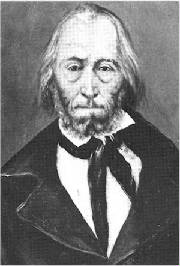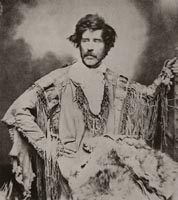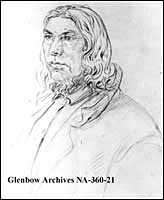|
Pierre Falcon, Jr. in his old age.


Paul Kane
"During his travels, Paul Kane made about five hundred sketches, including portraits and landscapes, of buffalo hunts,
and of the art and possessions of the eighty different indigenous tribes he encountered on his trip. From these, he later
made about one hundred paintings in his Toronto studio, showing the diversity and breadth of native cultures, which would
shortly be radically transformed by the effects of massive European immigration. Kane was typical of artists of European background
of the time, who regarded the indigenous people with curiosity. They were interested in recording, and even embellishing,
what was for them the exoticism of the native population."
|
 |
Title: James "Jimmy Jock" Bird, Blackfoot interpreter.
Date: October 18, 1855
Illustrator: Sohon, Gustavus
Remarks: Signed the American Blackfoot treaty in 1855.
This Metis man, son of James Bird who settled in Red River after a life as a fur trader, lived with the Blackfoot
people and was of service to Reverend Rundle as a somewhat reluctant translator. Paul Kane met him on his return trip
from the west coast in 1847.


Fort Garry by Paul Kane
History of the painting
[Probably drawn in June 1846, when he was recorded as having done the two sketches of Metis people leaving to hunt
buffalo from Fort Garry.]
"Fort Garry and St. Boniface c. 1851-1856
oil on canvas
45.9 x 73.6 cm
Transfer
from the Parliament of Canada, 1888
National Gallery of Canada (no. 102)"
|




